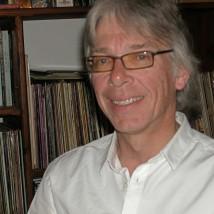The last word
The University’s modern towers at the east of George Square have been the subject of heated debate from the moment planners sharpened their pencils. As a refurbishment of Appleton Tower begins, architectural historian Dr Clive B Fenton reflects on the symbolism of the buildings and the vision that lay behind their construction.

Every Edinburgh alumnus knows the Appleton Tower and David Hume Tower (DHT), which stand guard over George Square. Many will remember sitting exams in these buildings, tutorials and lectures in DHT, or the long lab benches and Bunsen burners of the Appleton, in days gone by. For those of a certain age, the towers symbolise the twin commitment to the arts and the sciences, symptomatic of post-war optimism, and the massive expansion of higher education. I fear that the current generation of undergraduates rather take them for granted.
During the Second World War, the University resolved to make George Square the centre of its post-war development, and to abandon the King’s Buildings (KB) science campus. Little happened until 1949, when Sir Edward Appleton [Principal from 1948 to 1965] arrived to steer the scheme to fruition. In my opinion, he achieved more than any other principal in Edinburgh’s history, presiding over an expanding university that saw the student roll rise, from its pre-war level of 4,000, to 9,368 in 1970.
This sober Methodist was a brilliant scientist, well connected in government circles, and with a vision of the University’s direction over the coming 50 years. Embracing the spirit of the age, he decided to retain KB, for science buildings, foreseeing the multiplicity of technological research. Appleton also possessed the determination to overcome conservationist opposition.
For those of a certain age, the towers symbolise the twin commitment to the arts and the sciences, symptomatic of post-war optimism, and the massive expansion of higher education.
Determined to achieve an architectural outcome of high quality, he brought in some of Scotland’s leading architects. (Sir) Basil Spence was appointed planning consultant, in 1954. Spence’s imaginative drawings determined the template of the new George Square, proposing a series of towers to the east, of which but two were realised. The then-professor of architecture, (Sir) Robert Matthew, was called upon to design the Arts Tower, subsequently named after the 18th century philosopher, representing Edinburgh’s intellectual tradition.
Aware of the contemporary fear of an emerging schism between the arts and sciences, Appleton decreed that science undergraduates should spend their first year in the city-centre campus, and be encouraged to take courses in the humanities, as well as participate in student societies and extra-mural activities, so that undergraduates, and indeed staff, from different faculties would mingle. Appropriately, following Appleton’s death in 1965, his “Fundamental Science Building”, designed by Alan Reiach, was named after the Principal.
The sleek DHT, resplendent in its black slate cladding, is now accepted as an architectural gem, albeit grudgingly by some.
Some time ago, I prepared a survey of the University’s buildings for Historic Scotland. Following this, DHT and the Main Library were listed, while the Appleton Tower was withdrawn from consideration, under political pressure, as the building was considered to be the most disliked in the city. The sleek DHT, resplendent in its black slate cladding, is now accepted as an architectural gem, albeit grudgingly by some.
Of course, the Appleton Tower has until now been an incomplete project, lacking a main entrance, which would have been through a low building on the east side of the square, on a site still occupied by Georgian houses. It has not fared well either: shedding mosaics from its cladding, suffering misguided exterior painting, and clumsily festooned with telecommunications equipment.
The major refurbishment that has recently begun attempts to remedy these deficiencies, including full re-cladding, a new east entrance and a reworked west entrance. This will certainly freshen up the appearance of the building.
And there is still drama in the glazed staircase and excitement in the concourse, where there was once a cabinet displaying Sir Edward’s Nobel medal and other prestigious awards. The last time I saw the cabinet, it stood empty – Sir Edward’s medal is now on show in the entrance of Old College. However, I feel that the move has deprived the building of an important part of its context and meaning for today’s undergraduates.
Tower Blocks - Our Blocks!
Social and architectural historians at Edinburgh College of Art are creating a unique visual archive of every residential tower block in the UK.
“Tower Blocks – Our Blocks!” has been described as a Domesday Book of the UK’s post-war building boom. It will contain images of every single multi-storey public housing project constructed in Britain, including ones demolished more than 30 years ago.
The three-year Heritage Lottery-funded project will digitise 3,500 images taken in the 1980s and make them fully searchable as part of the Tower Block Slide Archive.
Among them are the Red Road and Gorbals schemes in Glasgow, the Everton flats in Liverpool, and London estates such as Broadwater Farm, Thamesmead and Roehampton.
Professor Miles Glendinning, head of the Scottish Centre for Conservation Studies at Edinburgh College of Art, says: “We hope this project will help contribute to the ongoing shift in public attitudes towards the post-war Modernist housing heritage, which is fast turning from an object of dislike and alienation into a force for potential community empowerment.”
Author

Dr Clive B Fenton (MA Architectural History 1997, MSc 1998, PhD 2002), is Secretary of Docomomo Scotland, which campaigns for the documentation and conservation of Scotland’s 20th century architecture. He leads regular walking tours around Edinburgh for Docomomo. He has also lectured and led master classes at Edinburgh School of Architecture and Landscape Architecture.

